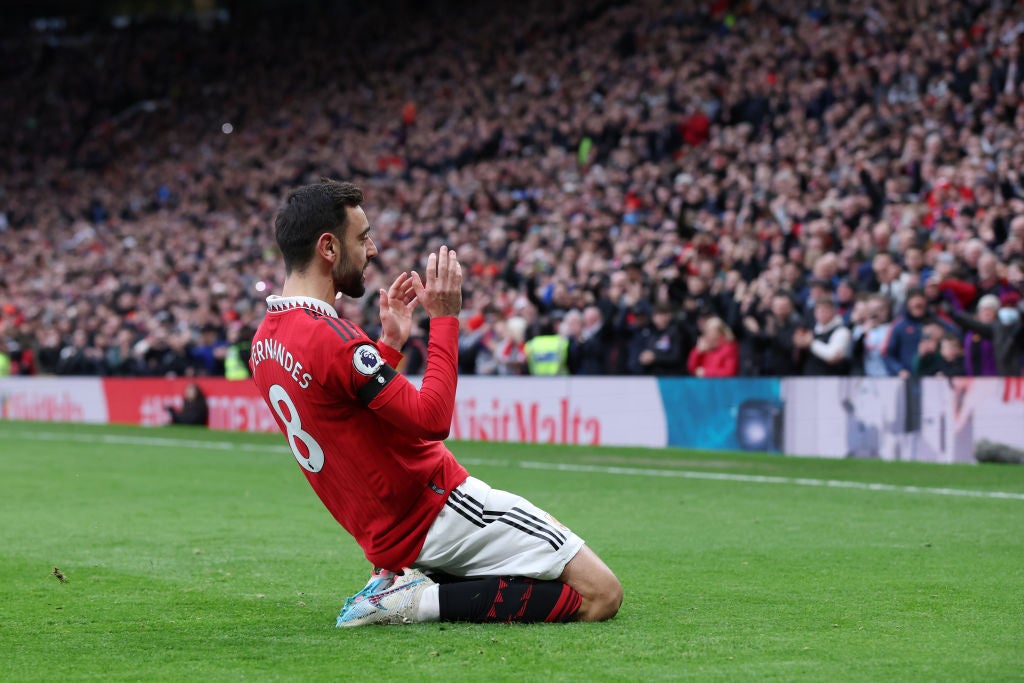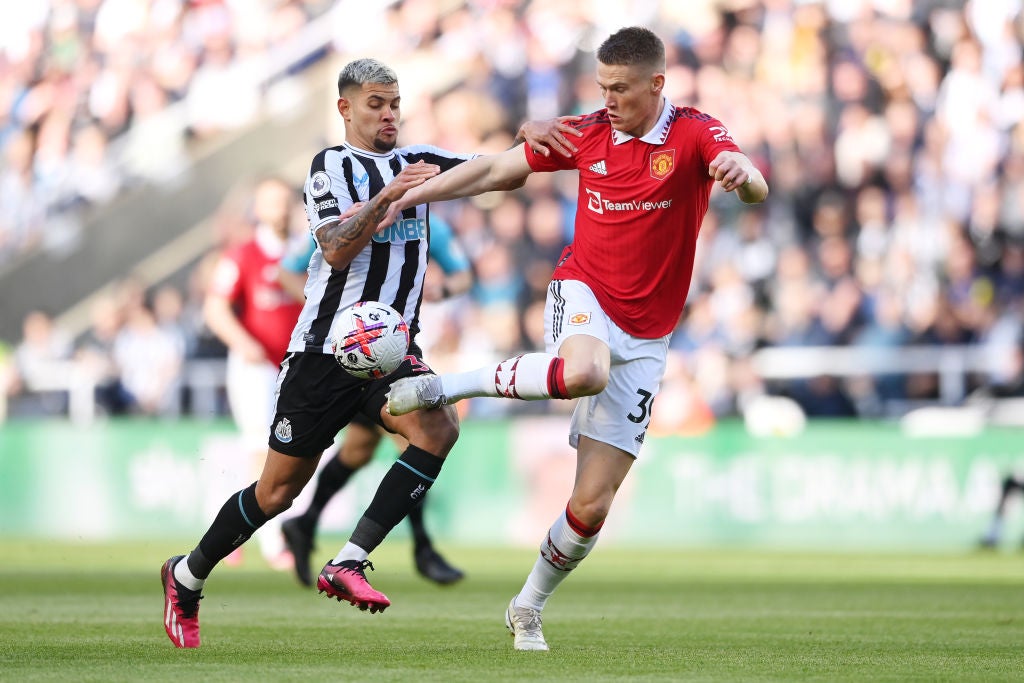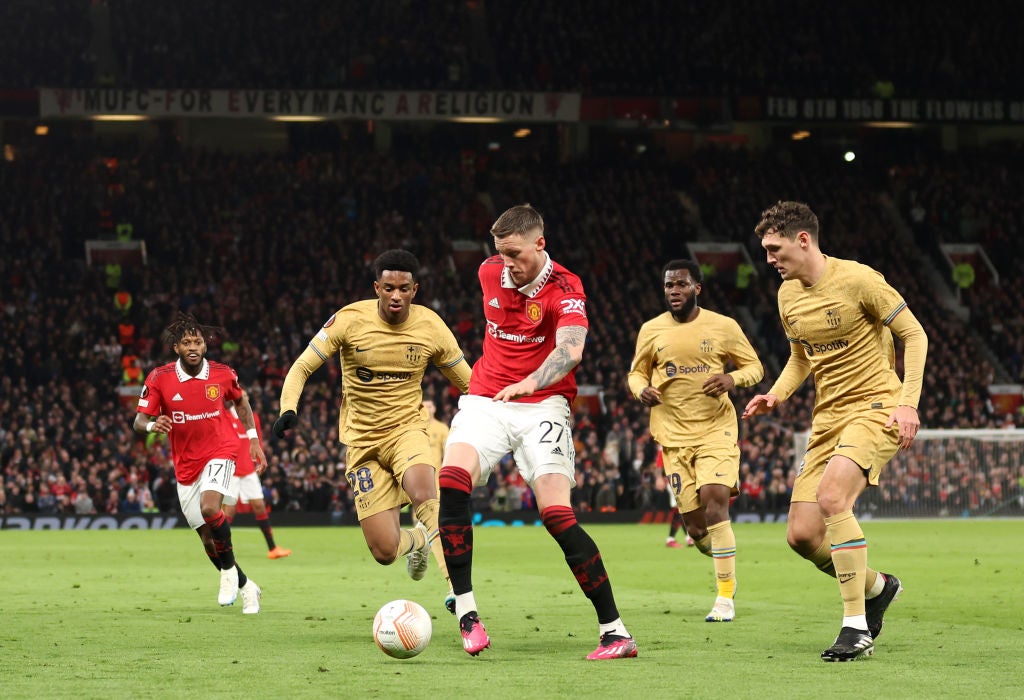
Erik ten Hag isn’t quite Erik ten tens. But in a season when Bruno Fernandes has started 54 of United’s 58 games and when, as the de facto captain, he has become even more pivotal, the Manchester United manager has shown an experimental streak, seeking to reinvent others as No. 10s and using the Portuguese in a variety of other roles.
If one conclusion may merely echo an opinion at the start of the season – that Fernandes is by far and away United’s best option in the position – Ten Hag’s other gambits have offered intrigue.
1. The Ajax No. 10
Given Donny van de Beek’s excellence for Ten Hag’s Ajax, it was easy to assume his United career could be revived by the appointment of an old ally. Even before the Dutchman’s season was curtailed, however, he had been a bit-part figure. He only made two league starts: one ineffectually in defeat at Aston Villa when Fernandes was suspended and the other against Bournemouth when he suffered a knee injury. The instructive element is that Fernandes operated off the right wing then; it has been a recurring theme.

2. The winger as a No. 10
Jadon Sancho’s outings have tended to come on the flanks but, particularly when he returned to contention in February, Ten Hag showed a willingness to use him in a central area. When Sancho scored against Leicester, with a goal Fernandes set up, it was notable the Portuguese provided the ball from the right for the Englishman in the middle: there was a seeming role reversal then, with Fernandes playing as a winger.
Then Ten Hag argued United’s ability to play higher up the pitch would help Sancho; certainly using him in the middle capitalises on his ability between the lines whereas, for a winger, he can lack raw pace. Sancho also operated as No. 10 against Nottingham Forest, Barcelona and Southampton, though Casemiro’s early red card forced a change of plan then. If a striker is signed in the summer and Marcus Rashford can spend all of next season on the left or Alejandro Garnacho kicks on, perhaps Sancho’s future may have to lie more in the middle.

3. The No. 10 who sometimes doesn’t play as a No. 10
Ole Gunnar Solskjaer fielded Fernandes almost exclusively as a No. 10. Ralf Rangnick famously, if unsuccessfully, used him as a false nine in a Manchester derby and occasionally tried him off the left, but largely put the Portuguese in his preferred position. It was, nevertheless, a time of diminishing returns from Fernandes, previously hugely productive.
Statistically, Fernandes has been less effective as a scorer under Ten Hag, with a mere six league goals, but he has excelled otherwise, fashioning the joint most big chances in the division and ranking top for shot-creating actions; largely as a No. 10, but also in a variety of different ways. Fernandes has exerted an impact when coming off the right, sometimes permitting Ten Hag to field three central midfielders; there are points when he has played more as a No. 8, particularly when Christian Eriksen was injured. Most remarkably, his passing range was used as a quarterback when Casemiro was suspended, especially in victory against Everton.
The problem for Ten Hag, perhaps, has been that he ideally needed two Rashfords – one as a left winger, one a centre forward – and two Fernandeses, one as a No. 10 and the other in a deeper or wider role, so he has been compromising. But Ten Hag has appreciated having a risk-taker as a No. 10, a player prepared to lose the ball in a bid to make something happen. If Fernandes has proved more versatile than expected, he has nonetheless remained United’s preeminent fantasista.

4. The defensive midfielder as a No. 10
It didn’t work. Ten Hag rearranged his midfield at Newcastle, putting Scott McTominay at the tip of it, partly to use his energy and tackling prowess to halt Bruno Guimaraes. United produced one of their worst performances of the season. But McTominay believes he is an attacking midfielder and there was greater evidence of the general concept working, albeit with the Scot as a No. 8, when he burst forward to score against Everton, while Fernandes played at the base of the midfield. He has been sidelined since then but the use of McTominay against Newcastle has the feel of a one-off.

5. The loanee as a No. 10
Marcel Sabitzer was hastily borrowed from Bayern Munich when Christian Eriksen was injured. His United career nevertheless peaked, albeit eventually in vain, in Fernandes’ position. A seven-minute, excellent brace against Sevilla seemed to position United to reach the semi-finals of the Europa League. The Austrian was altogether less effective in the return fixture, when Fernandes was suspended. Sabitzer does have a background as a scorer when he has got licence to attack – he struck 16 times for Leipzig in 2019-20 – and, against Sevilla, he showed ability to run in behind defences.
6. The strangest No. 10 in Manchester United’s history
Few get to start as a No. 10 at the Nou Camp and Anfield in the same season. Fewer still do so in a United shirt, and the logical assumption is that they must be a celebrated talent. Instead, and rather oddly, a status often reserved for the most inventive player in the squad has been granted to Wout Weghorst. A non-scoring striker has largely been a non-creative creator, sometimes offering a nuisance value with the pressing Ten Hag values – to the extent he once praised his fellow Dutchman for his “backwards pressing” – and, all arms and legs, bringing a disruptive element. But if Weghorst’s lack of goals – and, given his height, lack of aerial ability – have attracted attention, it is also notable he has a lone assist in the Premier League. While Weghorst did a decent job against Barcelona, the sight of him as 10 felt an indictment.

7. The No. 10 who hasn’t played as a No. 10
For much of his career, Christian Eriksen has seemed a quintessential No. 10, even if, for much of his time at Tottenham, he was drifting infield to create from a starting role on the right. He adopted a deeper role for Inter Milan and, after a deceptive debut as a false nine in defeat to Brighton, has established himself as Casemiro’s regular partner. Sometimes Eriksen has played more as a No. 8 in what can be a lopsided triangle in midfield. But Eriksen’s diminishing goal return – just one in the Premier League – and shot numbers, compared to his Spurs days, are signs he has been reinvented. He is the former No. 10, now more of a central midfielder.







